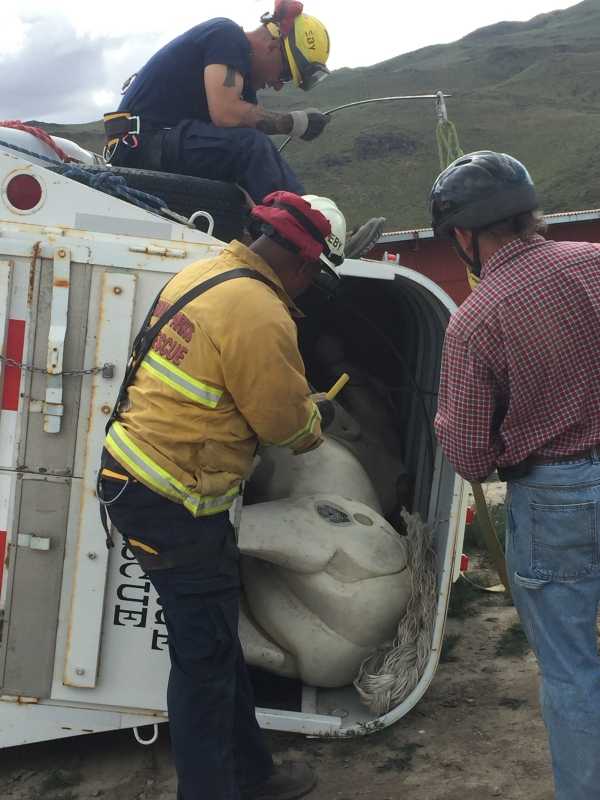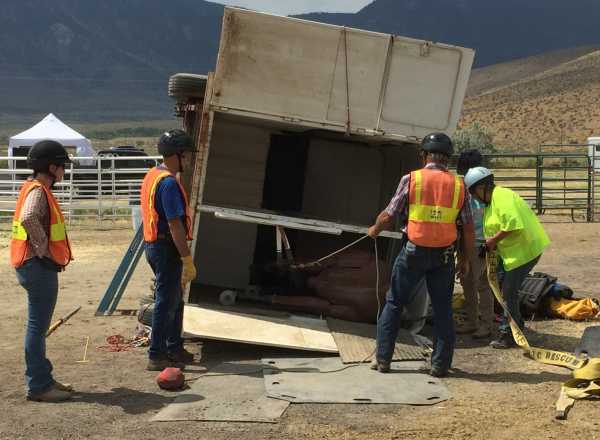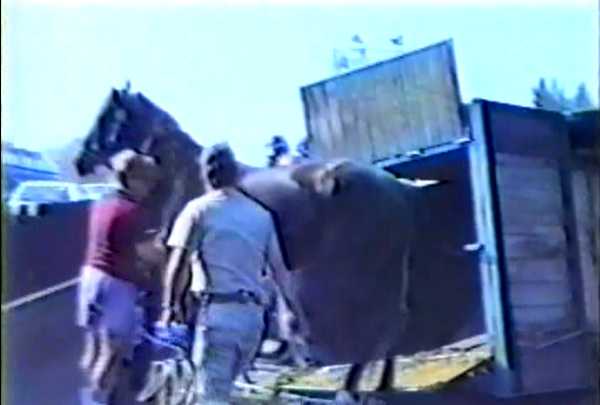|
PLEASE NOTE: Trailer extrications can be very dangerous. The information provided is for reference purposes only. Appropriate hands-on practice with proper equine mannequins and equipment is important for responders to have the skills and experience to handle these incidents safely and effectively.
Trailer accidents can be extremely tricky incidents that usually require methodically reasoned approaches to resolve. Horses are often trapped in confined spaces and entering those spaces to remove horses can be particularly risky. Sometimes the safest and most practical approach is to carefully return the trailer to its upright position with the animal(s) inside. (See
Uprighting an Overturned Horse Trailer.)
When horses or other large animals must be manually extricated the incident needs to be sensibly organized with a number of critical issues considered.
- These are incidents that require formal command and control as well as a safety plan, with a designated Safety Officer if sufficient personnel are available.
- The operation needs a plan that is communicated to everyone involved.
- Anyone not actively involved in actual rescue activities should be kept away from the work area.
- Horses can try to escape through any opening, at times causing fatal injuries. Secure all possible openings and be careful when opening any doors or windows to inspect the interior or when starting extrication activities. (The horse in the image below did survive.)

- Remote "long reach" tools should be used. Entry into the trailer by rescuers should be avoided, even if the horse is sedated.

- A veterinarian should be at scene whenever possible to sedate the horse prior to extrication and to evaluate the horse's injuries. A critically injured horse may need to be euthanized. Other injuries should be attended to prior to transport.
- Some kind of tether line needs to be attached to each horse's halter prior to extricating, including prior to the cutting of any trailer ties that the horse(s) may still be attached to.
- Sharp objects need to be removed or protected before attempting to move the horse.
- Recovery straps should be used to remove the horse. Tails are not handles. Dragging horses out via tail ties is a dangerous practice that can cause fatal injuries.

- Slip sheets or even loose trailer mats can be used to make the process of pulling the horse out easier and safer.

- Some form of ground cover should be placed for the horse to rest upon once extricated, especially if environmental conditions are extreme.
- Some form of containment should be considered. Even a sedated horse can suddenly get up. A "drunk" horse can be a serious hazard to rescuers and nearby traffic.

A far safer practice.

- Horses involved in overturned trailer accidents should receive follow-up veterinary care as they could have suffered injuries that weren't obvious at the scene.
|









